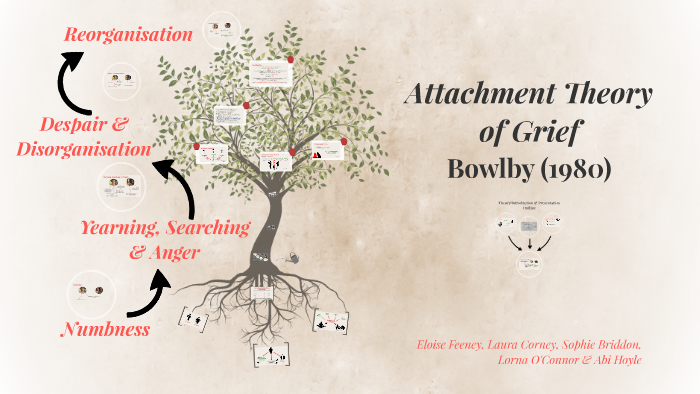Attachment And Loss: How Bowlby’s Theories Explain Grief And Mourning
The Heart Knows What It Knows: How Attachment Theory Explains Our Deepest Sorrows
We all know the sting of loss. It’s a universal experience, weaving its way through every culture and across generations. But while we all feel it, the way we process grief and mourning can vary wildly. Some people seem to bounce back quickly, while others get stuck in a cycle of pain. What explains these differences?
Enter John Bowlby, a British psychiatrist who revolutionized our understanding of human relationships. His groundbreaking work on attachment theory, developed in the 1950s, offers a powerful lens through which to view the complexities of grief.
A Secure Base for Our Emotions

Bowlby’s central idea is that humans are born with an innate need for connection. We crave closeness and security, and these desires are deeply rooted in our survival instincts. Just like a baby needs its caregiver for physical protection, we all seek out "secure bases" throughout life – people who provide emotional support and a sense of safety.
Think about it: When you’re feeling scared or uncertain, who do you turn to? Who offers comfort and a listening ear? These are the people who act as our secure bases, providing a haven in the storm of life.
When the Secure Base is Lost
But what happens when that secure base is suddenly ripped away? When death, separation, or a major life change shatters our sense of safety? This is where Bowlby’s theory becomes truly illuminating.
Grief, according to attachment theory, isn’t just a sad feeling. It’s a complex emotional response to the loss of a vital attachment bond. It’s a natural reaction to the disruption of our sense of security, a desperate attempt to regain the missing piece of our emotional world.
The Stages of Grief: A Roadmap to Healing
You might have heard of the five stages of grief: denial, anger, bargaining, depression, and acceptance. While these stages aren’t necessarily experienced in a linear fashion, they offer a framework for understanding the different phases of grief.

1. Denial: This is the initial shock and disbelief that often follows loss. It’s a protective mechanism, allowing us to process the overwhelming reality at our own pace. We might say things like, "This can’t be happening," or "It’s all a mistake."
2. Anger: As the denial fades, anger often emerges. We might be angry at the person who died, at ourselves, or at the unfairness of life. This anger can be directed inwards, leading to self-blame, or outwards, causing conflict with loved ones.
3. Bargaining: In this stage, we try to make deals with ourselves or with a higher power. We might promise to change our ways if the lost person could come back, or we might bargain with fate for a different outcome.
4. Depression: The weight of the loss begins to settle in, leading to feelings of sadness, emptiness, and despair. This is a time of deep emotional pain, where we might withdraw from the world and struggle to find meaning in life.
5. Acceptance: This is not about being happy about the loss, but rather about coming to terms with it. We begin to accept the reality of the situation and find ways to move forward with our lives. This doesn’t mean forgetting the person we lost, but rather integrating their memory into our new reality.
The Power of Attachment in Healing
While these stages provide a general framework, it’s important to remember that grief is a deeply personal journey. There’s no right or wrong way to grieve, and the process can vary significantly depending on factors like the nature of the relationship, individual personality, and cultural influences.
However, understanding attachment theory can help us navigate the complexities of grief in a more informed and compassionate way. It reminds us that:
- Grief is a natural response to loss. It’s not a sign of weakness or failure, but rather a testament to the strength of our bonds.
- We need support to heal. Reaching out to loved ones, seeking professional help, and engaging in healthy coping mechanisms can make a world of difference.
- Healing takes time. There’s no set timeline for grief, and it’s okay to experience a range of emotions along the way.
- Love doesn’t die with loss. The memories and lessons learned from our loved ones continue to shape us, even after they’re gone.
Beyond the Individual: The Social Impact of Attachment Theory
Bowlby’s work has had a profound impact on our understanding of human development, parenting, and social policy. His ideas have influenced everything from early childhood education to the design of hospital wards, emphasizing the importance of creating environments that foster secure attachment and promote emotional well-being.
The Latest Research: Unpacking the Brain’s Response to Loss
Recent research in neuroscience is shedding even more light on the biological underpinnings of grief. Studies have shown that the brain regions associated with attachment and social bonding are activated during grief, explaining why the pain of loss can feel so intense and physical.
Furthermore, researchers are exploring the role of neurochemicals like oxytocin and cortisol in the grief response. Oxytocin, known as the "love hormone," is released during social bonding and can help regulate our emotional responses. However, when a secure attachment bond is broken, the release of oxytocin can actually amplify feelings of sadness and loneliness.